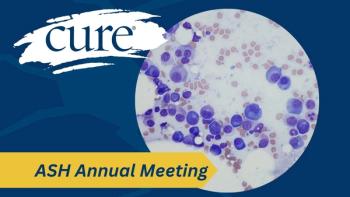
Three-Drug Regimen Is Promising Across Kidney Cancer Subtypes
Cabometyx, Opdivo and Yervoy led to high disease control rates across different subgroups of patients with kidney cancer, research showed.
The three-drug regimen of Cabometyx (cabozantinib), Opdivo (nivolumab) and Yervoy (ipilimumab) showed promising response rates in various subtypes of kidney cancer — also referred to as renal cell carcinoma with variant histologies (RCCvh). according to results presented by Dr. Bradley A. McGregor, at the 2023
Data from a single-arm phase 2 trial showed that at a median follow-up of 10.4 months, 39 patients experienced an objective response rate (percentage of patients whose disease shrunk or disappeared as a result of treatment) of 18% with a disease control rate of 76%. All responses were partial responses, meaning that no patients saw their disease complete go away, with stable disease was reported in 59% of patients and progressive disease reported in 23%. The median duration of response was not reached for responders; however, 86% maintained a response for greater than six months.
At the time of the analysis, 14 patients remained on therapy, and 25 discontinued due to progressive disease (12 patients), unacceptable toxicity (eight patients), withdrawal (one patient), other reasons (two patient), starting nonprotocol therapy (one patient) and one patient died.
When examining histology, those with papillary disease (20 patients) reported a partial response rate of 25%, stable disease rate of 55%, and a progressive disease rate of 20%. Patients with chromophobe disease (11 patients) experienced partial response, stable disease and progressive disease at rates of 9%, 45%, and 45%, respectively. Further, patients with translocation histology (five patients) and other (two patients) all achieved stable disease, and the one patient with unclassified RCC achieved a partial response.
Those without sarcomatoid differentiation (30 patients) experienced partial response, stable disease and progressive disease rates of 17%, 63% and 20%, respectively. These outcomes were reported at rates of 22%, 44% and 33%, respectively, among those with sarcomatoid differentiation (nine patients). When analyzed by prior therapy, those who had received prior therapy (five patients) had no partial responses, with 60% of patients achieving stable disease and 40% having progressive disease. Among those who had not received prior therapy (34 patients), partial responses were achieved in 21% of patients, with 59% and 21% having stable disease and progressive disease, respectively.
Estimates of progression-free survival (time from treatment until disease worsens) rates at six and 12 months were 68% and 51%, respectively. The 12-month overall survival (time from treatment until death of any cause) estimate was 79%.
“Combinations of immunotherapy and tyrosine kinase inhibitors yields response rates near 50% in RCCvh but novel approaches are needed,” wrote McGregor, principal investigator of the trial, a senior physician at Dana Farber Cancer Institute, and director of Clinical Research at the Lank Center for Genitourinary Oncology.
“In COSMIC-313, (Cabometyx) with (Opdivo) and (Yervoy) improved (progression-free survival) over (Opdivo)/(Yervoy) in clear cell RCC,” investigators wrote, noting that clear cell histology has a better prognosis than RCCvh. However, they added that the COSMIC-313 “survival data remain immature.”
High-dose steroids such as 40 mg or more of prednisone were required in 44% of patients and 21% of patients discontinued therapy because of toxicity. Side effects occurred at grades 3 and 4 (moderate to severe) with the most common including increased alanine aminotransferase levels (36%), increased aspartate aminotransferase levels (23%) — both of which indicate liver damage — cardiac effects (10%), decreased platelet counts (5%), hyponatremia (5%), hypertension (5%), increased creatine levels (5%), fatigue (5%) and oral mucositis (5%).
Dose reductions of Cabometyx to 20 mg daily occurred in 72% of patients and reductions to 20 mg every other day occurred in 18% of patients. Patients received two or more (34%), three (23%) or four (44%) cycles of Opdivo and Yervoy and 24 patients were given Opdivo maintenance with the median number of cycles received being six (range, 1-24).
An expansion cohort is currently enrolling with 20 mg Cabometyx, Opdivo and Yervoy.
For more news on cancer updates, research and education, don’t forget to





